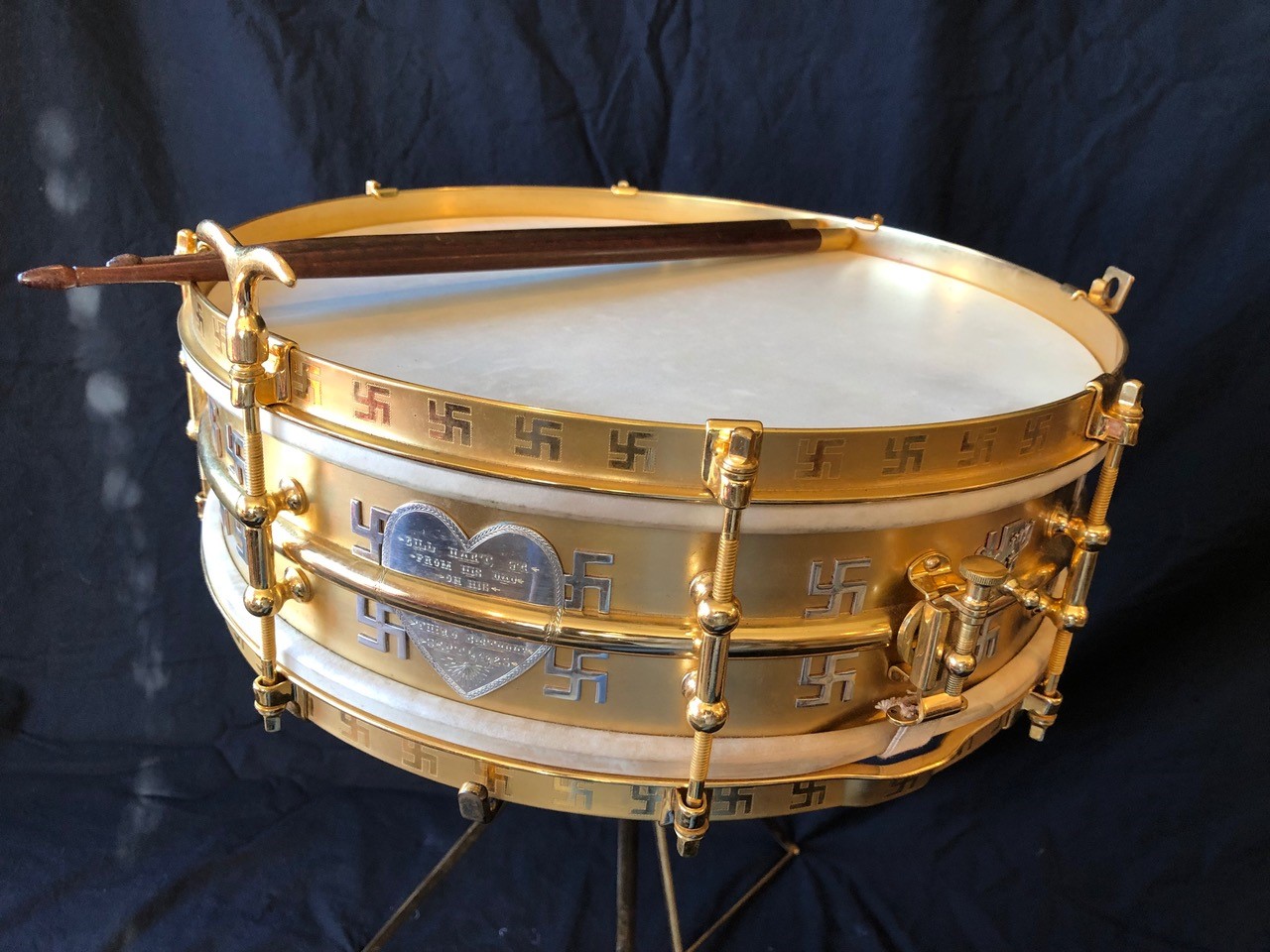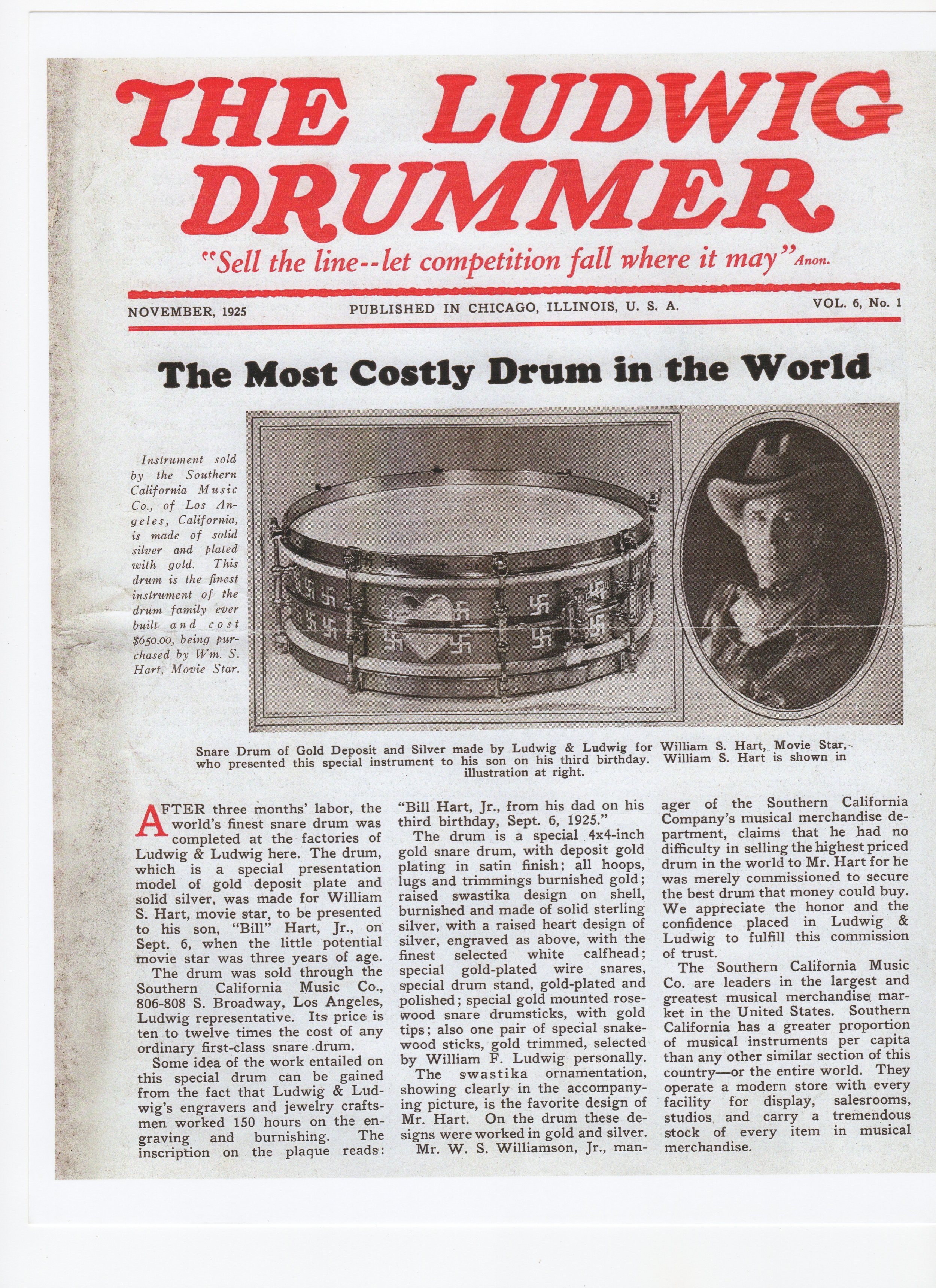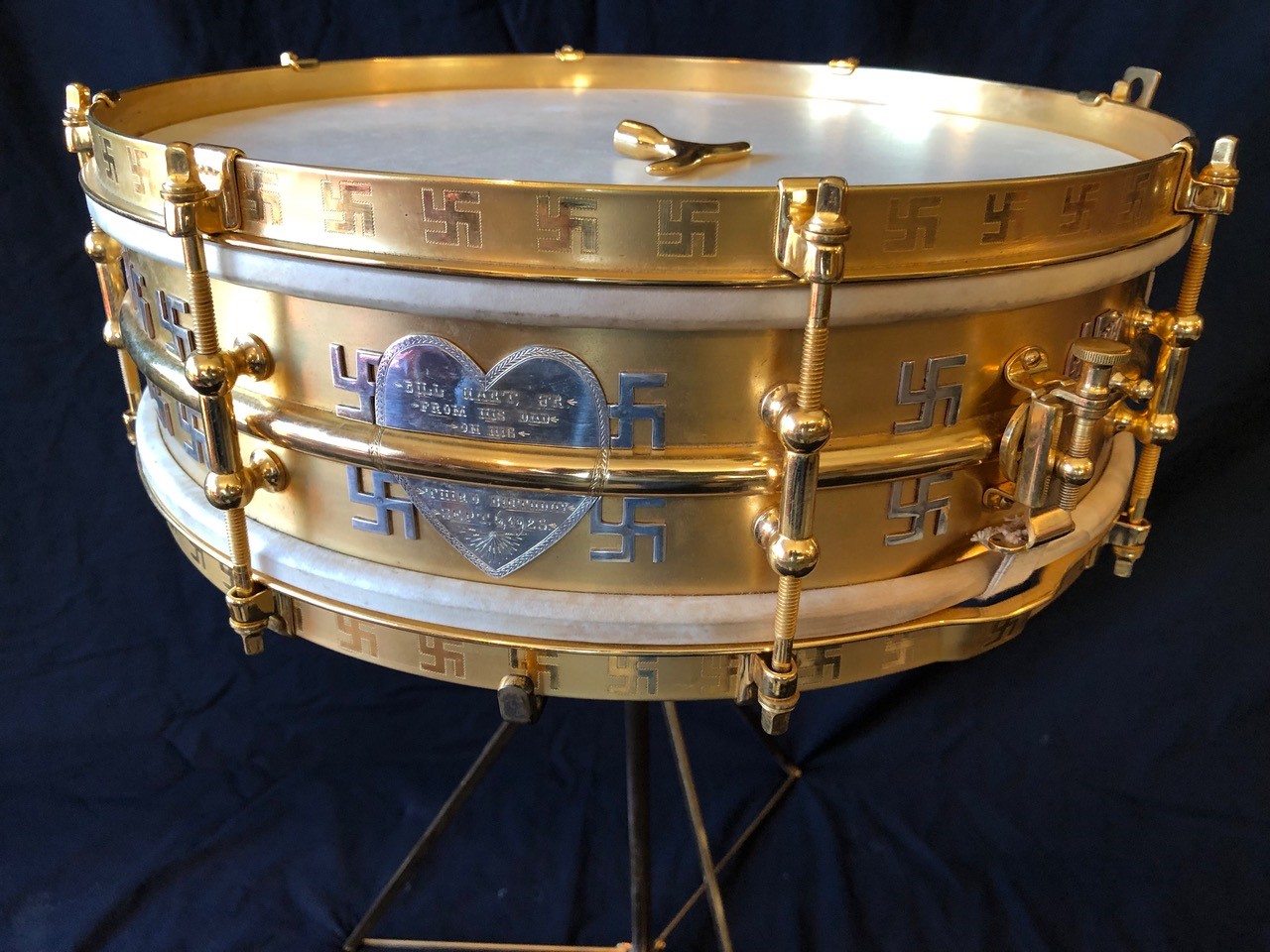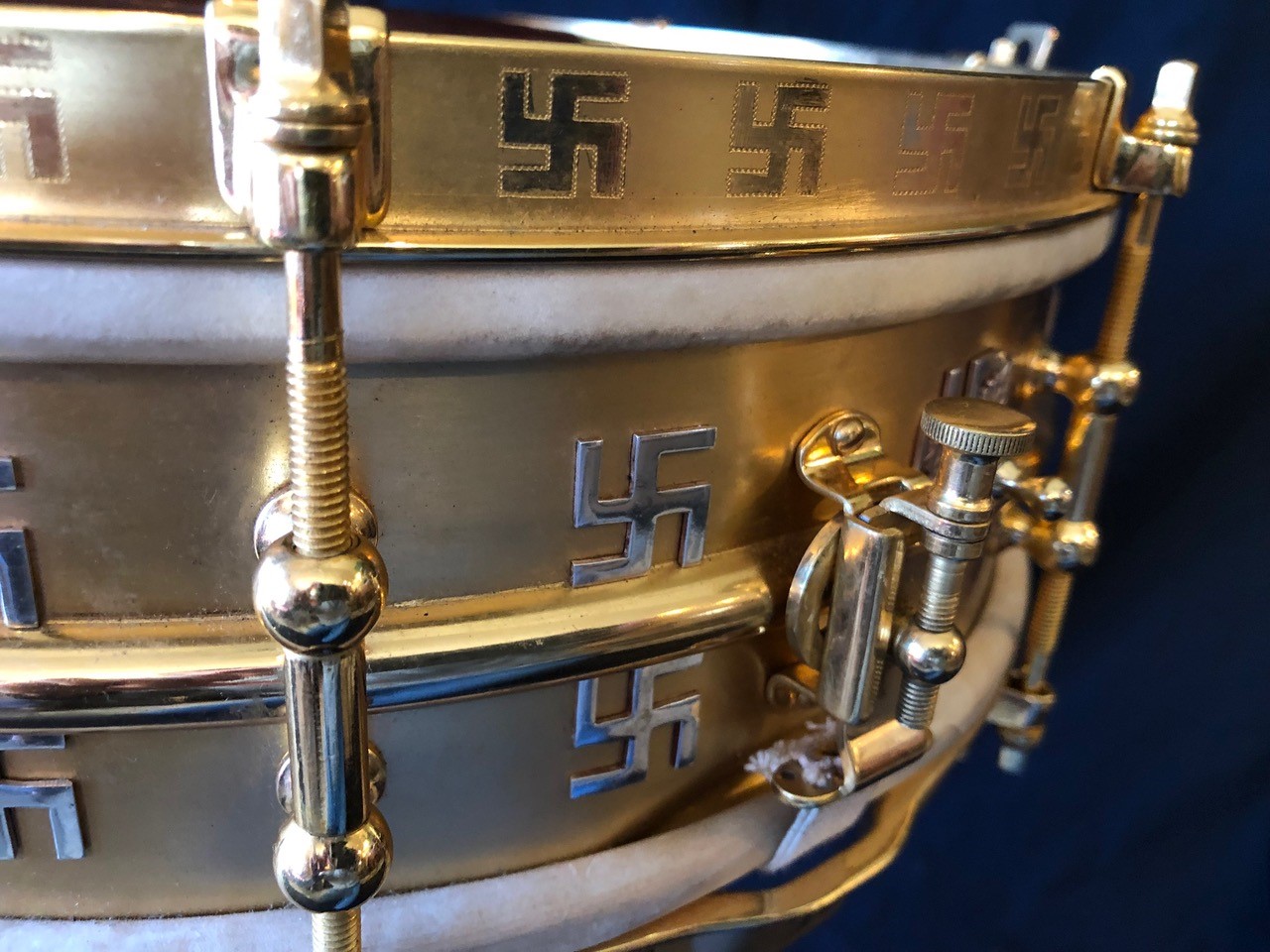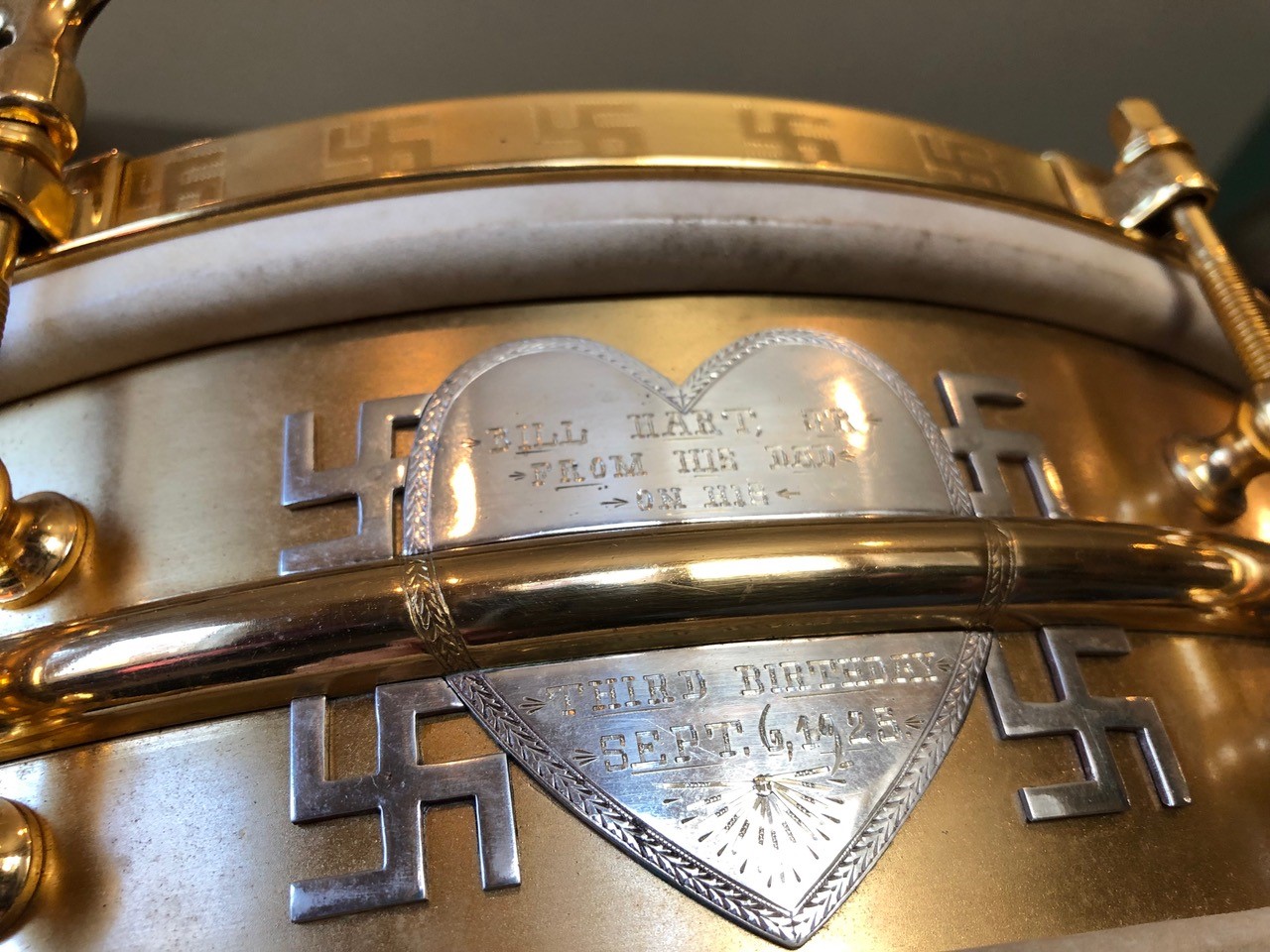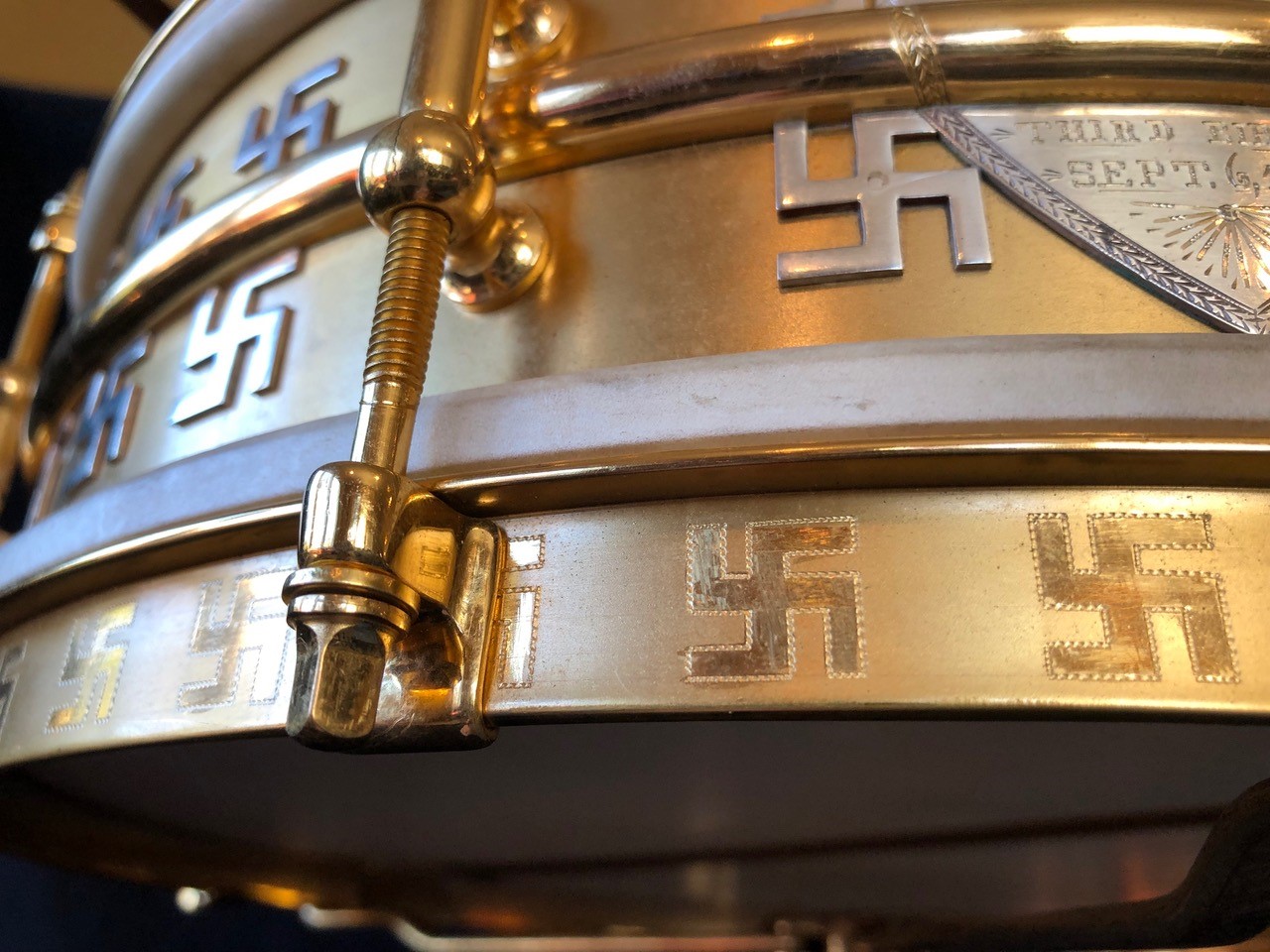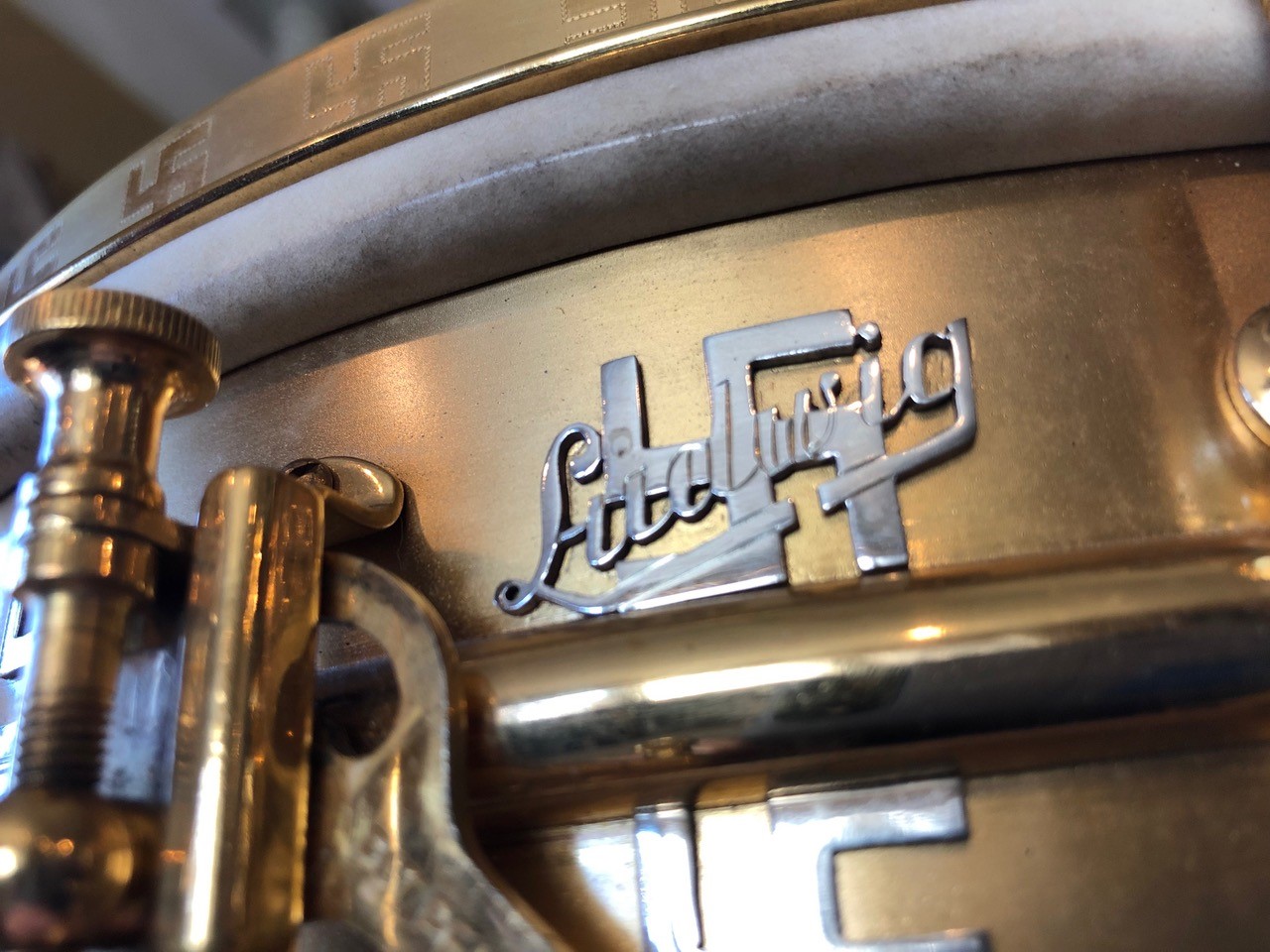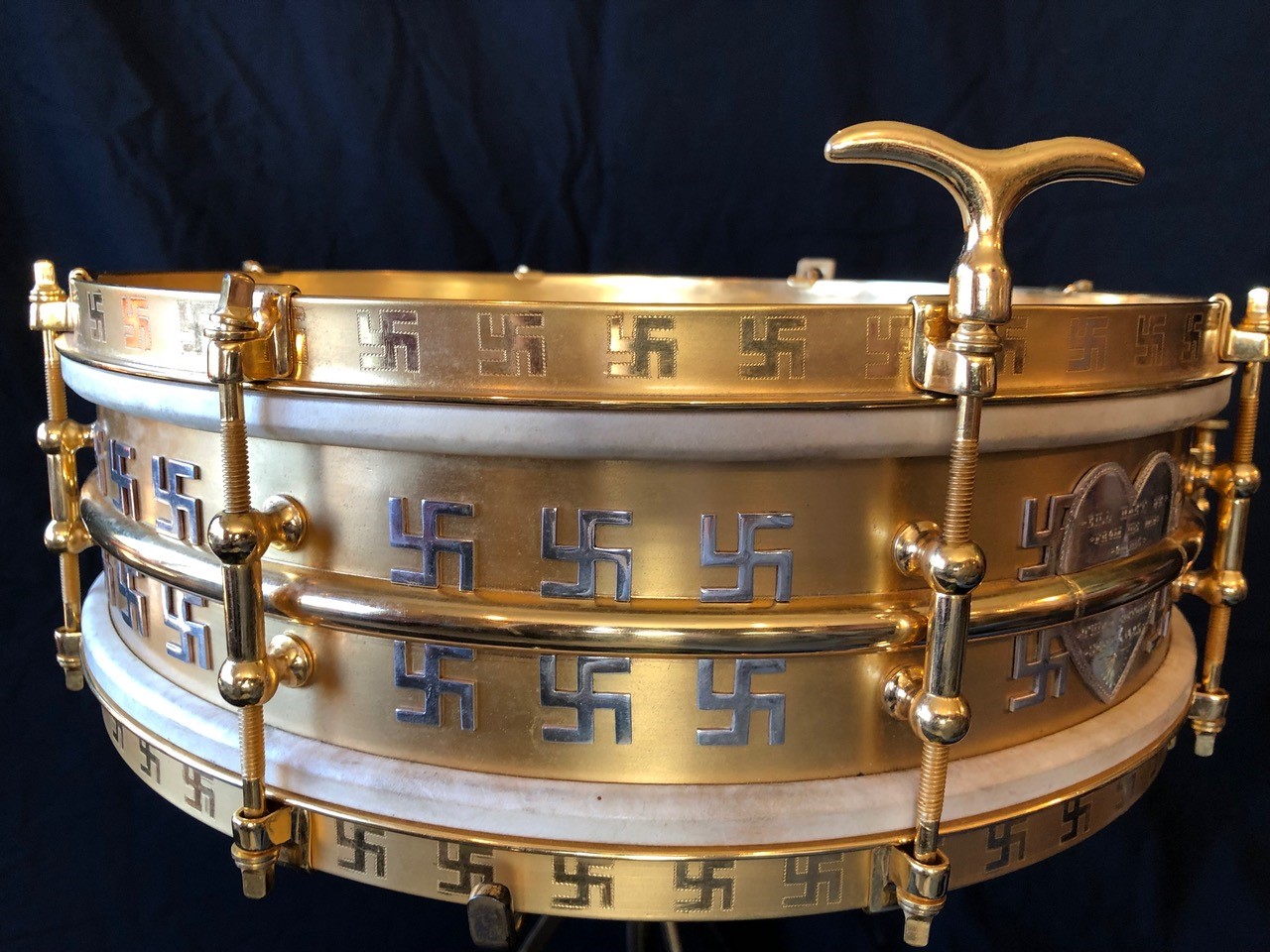THE WILLIAM S. HART ALL GOLD SNARE DRUM
The swastika symbol was hijacked by Hitler and the Nazis. Read about it and you’ll find that it is an ancient sign used by many cultures, including Native Americans, for the wish of good fortune for another. In researching the engraving on the Colt revolvers, a friend of mine was told that in the 19th century world of cowboy art, swastikas were used on metal parts on saddles and guns. William S. Hart lived in the world at that time and seemed to like the western talisman that would bring good luck. He clearly wished that for his toddler son.
What is it like to have so much money that you can have something made that is one of a kind? Of course, we believe that kings and movie stars have that kind of money and power. In 1915 and 1916, the most successful movie star of his day, was a former Shakespearean stage actor who assumed the look and demeanor of a cowboy – a no nonsense man with a firm set jaw. He was William Surrey Hart, appearing in silent movies and dressed with no flash, frills or fringe and always saddled on his Pinto, Fritz. He made 65 movies before the public decided they wanted younger leading men who would bring the flash, frills and fringe.
Hart married once, and for a very short time, to a much younger woman, who was an actress. Their child, William S. Hart Jr., was born after his parents separated. They later divorced. Hart Sr. gave fabulous gifts to his son. The first birthday gift was a silver, engraved loving cup with the child’s face on it. The second birthday gift was a pair of matched Colt revolvers, with ornate silver engraving done in Hollywood by Ed Bohlin, who became very famous on his own. He did work on saddles, belt buckles and gun rigs for Tom Mix, Hopalong Cassidy, Roy Rogers and Clayton Moore for the “ Lone Ranger” gear. Silver plays a big part in the history of the WSH snare drum.
Today’s story is really about the birthday gift given for age 3. It was so special that the Ludwig Drum Company published a “for dealers only” issue of “The Ludwig Drummer” dated November,1925. The headline said it all… “The Most Costly Drum in the World”. I am relying on material in that article.
Hart, or one of his representatives, visited the Southern California Music store in Los Angeles, and asked to purchase “the best drum that money could buy”. As a Ludwig dealer, the store could sell Ludwig’s costliest snare drum – the Triumphal, gold plated and engraved and burnished for about $120. At that time, a regular Professional Ludwig nickel plated snare would have been $35 and there were less expensive models. The Triumphal may have been readily available in Los Angeles and Hart may have bought one initially. For years, in the Ludwig boardroom there was a 4x14 beautifully engraved Triumphal with a desk name plate sign that said it was the William S. Hart snare drum, and we accepted that. I owned that drum for a few years and it has been sold again, at least three times. After I bought it, I asked Bill Ludwig II why the Ludwig factory had a snare drum that was supposed to belong to Hart. I had never seen a William S. Hart movie but I knew his name. Bill Ludwig told me he had no idea.
In 1994, I contacted the William S. Hart Home, which is a museum in Newhall, California. The curator told me that there was a snare drum made for William S. Hart, Jr., and as far as he knew, Hart Jr. still had it. You can imagine my confusion and desire to get to the bottom of things because now there were two drums! I sent a letter and asked that it be forwarded to William S. Hart Jr. It was forwarded, but never answered. And then I found the “Ludwig Drummer” article.
I knew the snare drum was out there, but wondered if we, the public, would ever see it. All that was available, were the black and white images and the descriptions in that one special issue. The drum was a 4x14, with a gold plated satin finish with solid sterling silver. Ludwig’s engravers and jewelry craftsmen were said to have spent 150 hours on engraving and burnishing. There is a large heart shaped plaque taking up about half of two panels, one section left of the strainer and between the tube lugs that reads: “Bill Hart Jr., from his dad on his third birthday, September 6, 1925”. What is immediately evident is the recurring motif – on the hoops and on the shell. The hoops have engraved swastikas and the shell has 4 to 6 raised swastikas per panel, and these are sterling silver. The Ludwig logo is in sterling silver.
The swastika symbol was hijacked by Hitler and the Nazis. Read about it and you’ll find that it is an ancient sign used by many cultures, including Native Americans, for the wish of good fortune for another. In researching the engraving on the Colt revolvers, a friend of mine was told that in the 19th century world of cowboy art, swastikas were used on metal parts on saddles and guns. William S. Hart lived in the world at that time and seemed to like the western talisman that would bring good luck. He clearly wished that for his toddler son.
Silver seems to have been a favorite – the silver loving cup, the heavily engraved silver Colt pistols and the work on this one of a kind snare drum. Perhaps a “mere” Triumphal was not special enough for his son. I am guessing that he bought the Triumphal, so Junior got a gift on time, and kept it until the All Gold snare drum was ready. The birthday was in September, the article published in November. The music store probably had an agreement with Ludwig to return the Triumphal to the factory as part of the deal. That deal, no doubt, included the prominent advertising of the All Gold, which greatly benefitted Ludwig. After all, the cost of the William S. Hart All Gold snare drum was almost six times the cost of a Triumphal. We can only imagine what the publicity was worth back then. It influenced the public and tweaked the noses of the competition. That might be why the company had the drum over 60 years later, and Bill II took it home when he sold Ludwig to Selmer.
The All Gold Snare drum is priceless, in one respect. It is one of a kind, with one owner – great and strong provenance. The snare drum does exist.
In 2014, my letter of twenty years before, was answered. The widow of Mr. Hart, Jr., remarried and her husband called me and all I could hear myself saying was… “I knew it, I knew it, I knew it existed”. Well, it doesn’t just exist, it looks like it went straight from the Ludwig factory into a bank vault. This is a 94 year old drum that looks unused. It had to have been tapped a little by junior because there are three unbroken sticks capped in gold, so number four must have broken. And there is a gold drum key. Gold and silver… gold and silver…fit for a prince or the son of a movie star.
The William S. Hart All Gold snare drum, made by Ludwig & Ludwig in 1925, owned by one family since then, is about to see the light of day. Some lucky person is going to be able to buy it and I hope I get to chronicle the story. Donn Bennett is the broker - www.DonnBennett.com . Since William S. Hart started off as a Shakespearean actor, I will quote the Bard with a little bit of a change as I daydream about this drum….. “This is such stuff as dreams are made on”.
December 2018

